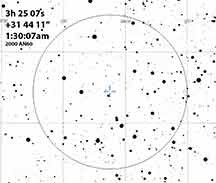
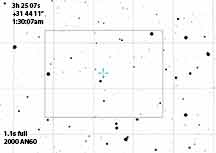
This is a faint event, but it lasts 1.1 seconds and so longer integrations like 16x should still be able to get it if skies are clean. Karl's just barely north of the northern limit, inside the 1-sigma zone so a 'miss' would be useful. Kirk and I are on the south side of the shadow. However, I will have to drive a bit because that direction is totally blocked from my neighborhood. 1.4s duration is what tempted me to think I might be able to get this...
Alt=26, Az=291 in Perseus, about 12 degrees to the right of the Plieades
 |
 |
Start: 9:28:23 UT End: 9:31:41UT
I observed from Monte Ave, before the cul-de-sac. At 8x setting. Disconnected the monitor before event but after tape start, you'll see a momentary glitch. I think it may have marginally improved the visiblity of the stars. The target is barely visible on a 66 frame Fourier finder, and essentially invisible on the frame to frame as I watched the analysis. Just 22 degrees from a 90+% moon, this event was far too difficult to even spend time on, let alone precious past 1am sleep time. The 1.4s duration was a lure, but it was just lost in the sky noise.
Long=122 00 51.88
Lat=36 59 43.07
elev=41m
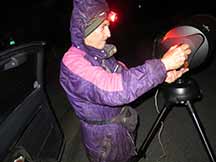 |
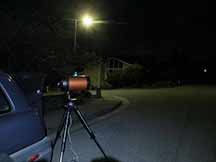 |
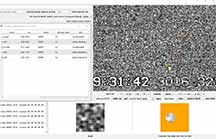 |
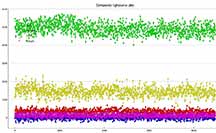 |
The target light curve barely averaged above zero. No way is there any detection possible here. |
I used horizontal and vertical median filtering, 3.2 px circular masks which looked to be optimal. I used a 66 frame finder to locate the target, which was barely above sky even after 66 frames of stacking. The two tracking stars were bright and stable and should have kept the aperture on the target. Kirk got better data. Conditions at our sites different? Not clear why his data is clearly better than mine. Both at 16x just a few miles apart.
Purple heart - too tough. No report to file.
I don't see an event for 2000 AN60, 16x from home Jan 11. There was a 94% moon 22 degrees away, and a faint target. Predicted duration was 1.38 sec at 4.7m. PyOTE detectability tool reported an event of duration 1.1 seconds would likely be detectable with my data. Either a miss or too short to detect, or lost in the noise. I tried both a nest of static apertures and TME aperture, attached is from TME.
No apparent event. Low contrast due to a 94% moon 22 degrees from a faint target. Predicted duration was 1.38 sec at 4.7m. PyOTE detectability tool reported an event as short as 1.1 seconds was likely detectable with my data.
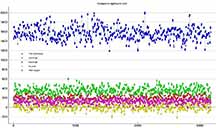 |
 |
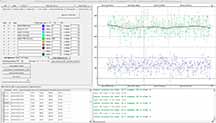 |
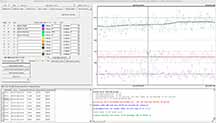 |
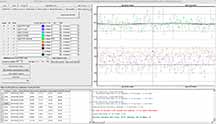 |